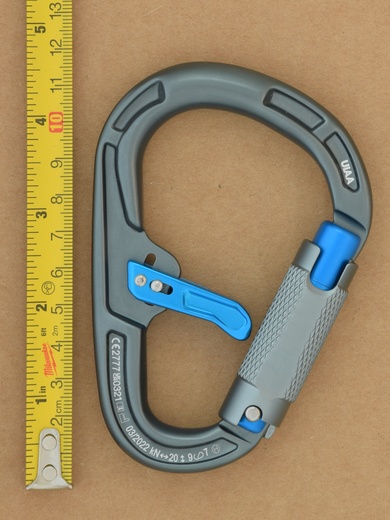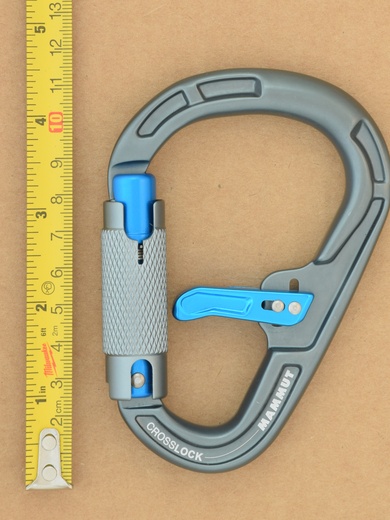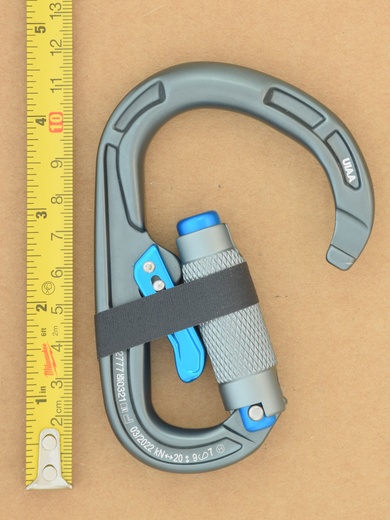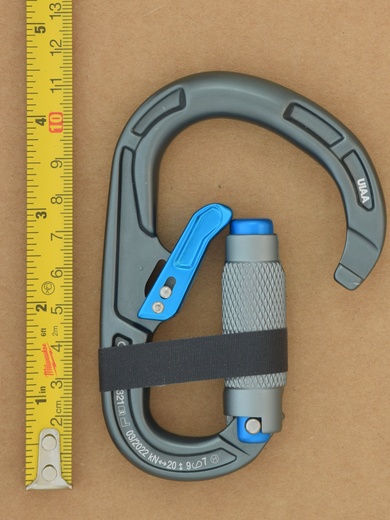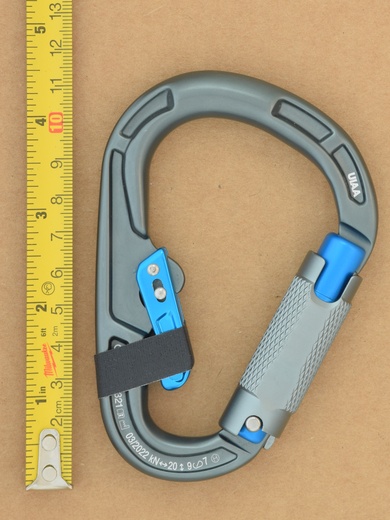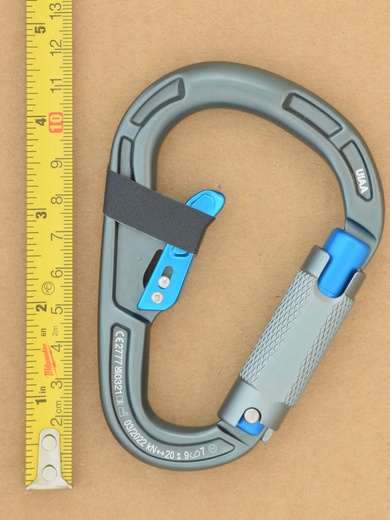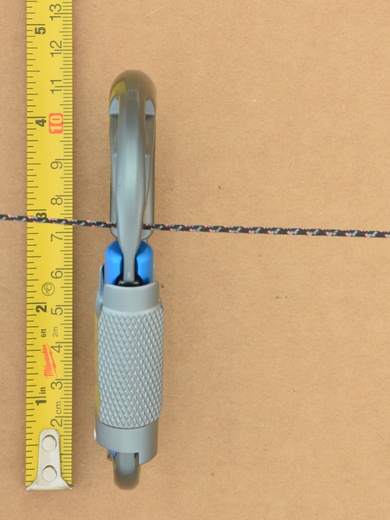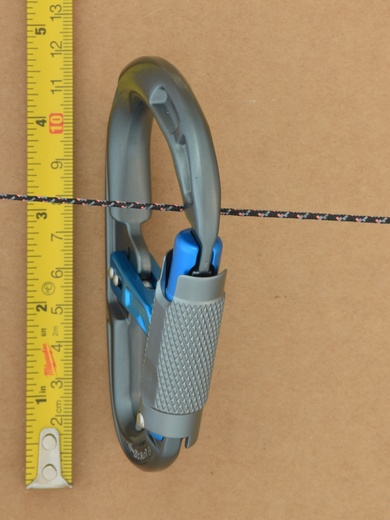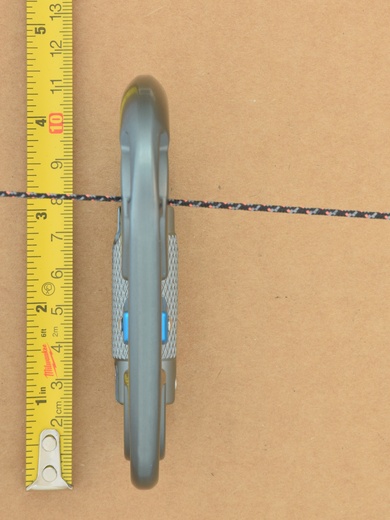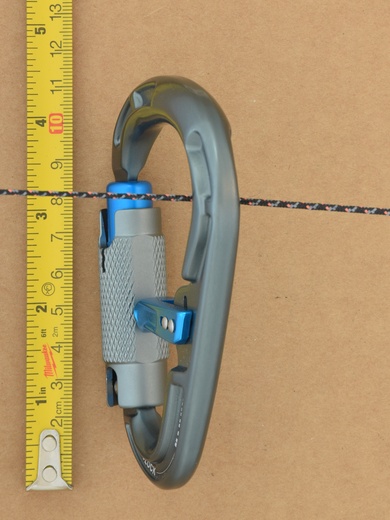| Accession Number: | 2024.37.014 |
| Name: | Mammut Bionic Crosslock |
| Category: | triple-action twist lock |
| Locking Type: | full-auto |
| Locks: | double |
| Unlock Style: | lift-and-twist |
| Sleeve Rotation: | 90° (unlocked) | 90° (maximum) |
| Shape: | HMS |
| Material: | aluminum |
| Profile: | I-beam: webbed |
| Nose: | keylock |
| Nose Guard: | none |
| Rivets: | domed: sharp edged |
| Gate Shield: | full |
| Anti Crossload: | interior bi-directional gate: solid |
| Weight: | 97.0 g |
| Dimensions: | Length: 112.52 mm Width: 76.92 mm Depth (basket end): 7.86 mm Gate Opening: 21.5 mm |
| Strength Ratings: |  20 kN | 20 kN |  9 kN | 9 kN |  7 kN 7 kN |
| Other Markings: | Laser: CROSSLOCK MAMMUT | UIAA (ce-logo)2777 0321 0321  03/2022(ratings)Ⓗ 03/2022(ratings)Ⓗ |
| MSRP: | $44.95 (2023) |
| Collection Criteria: | ★ Mechanically Interesting |
| Summary: | bi-directional internal gate |
| Description & Commentary: | With more climbers (and gyms) adopting assistive braking devices (Petzl Grigri, Edelrid Jul variants and the like) as their primary belay device, manufacturers have produced an ever increasing variety of carabiners with anti-crossloading features to aid in smooth device operation and manipulation. The Mammut Crosslock sports a unique bi-directional solid gate. The spring resistance and fin-like hinge area of the interior gate resists carabiner migration, since the gate just needs to offset the weight of the carabiner itself. Because the gate moves in either direction, it is easier to use and rack than a design with a uni-directional gate - at the cost of complexity and is more succeptable to dirt and debris. As it opens, the main carabiner gate naturally pushes the interior gate down, so this feature does not provide an additional level of locking (or annoyance, depending) as it might appear. A spring and ball bearing provides return pressure for the gate, and indexes on a divot in the spine side of the hinge. The gate sweeps up easily (towards the basket end), but has more resistance when pushed down. Cleverly, the interior gate actually slides along the central pivot to provide additional space on the runner end, but requires compressing the spring more than with lifted upwards. The carabiner body has solid section of the basket for smooth rope operation, more relevant when the belay rope runs through the carabiner itself, as is the case with a passive ABD like Mammut's own line of Smart Belay devices. |
| Technical Notice: | Technical Notice |
